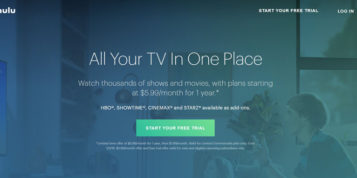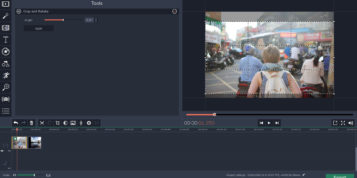Nowadays, everyone is a content creator. With almost everybody armed with a smartphone, nothing goes undocumented – whether that be an unfolding event or a freak weather phenomenon. In fact, according to Statista, the number of video hours uploaded every 60 seconds grew by 40% between 2014 and 2019. The general public is now able to capture significant and sometimes shocking moments as they unfold and post them online for all to see. This means we’re no longer reliant on news outlets to capture real-life events as they happen. However, much of this user-generated content (UGC) is being circulated predominately on social media sites such as Twitter. Consequently, a large proportion of UGC isn’t being used to its full potential and much of its value is going unrealised. Therefore, with ever-expanding amounts of UGC being created, how can news outlets, broadcasters and brands ensure they’re making best use of this content and what is the value of doing so?
How UGC is changing the game
UGC can be of significant value to brands, helping them to create more impactful marketing materials which resonate with customers, as evidenced by the fact that 85% of consumers find UGC to be more influential than branded content. Similarly, 79% watch UGC before purchasing anything. It is also considered 35% more memorable than other media and 50% more trusted. Its use in adverts and marketing resources can also have a substantial impact on how a brand is perceived, for instance, consumers are 2.4 times more likely to view user-generated content as authentic compared to content specifically created by a brand. A further benefit for businesses is the creativity UGC can afford them, enabling them to show the viewer the world from a myriad of perspectives and develop more compelling stories. Genuine human emotion can be difficult to recreate, therefore, the use of UGC can help brands convey this with more authenticity.
According to Nielsen, 92% of consumers trust organic UGC more than they trust traditional advertising. Additionally, 70% of consumers say they trust earned media, such as recommendations from those they do not know, above all other types of advertising. Consequently, UGC in which members of the public share their reviews of brands and products can be a hugely influential tool for brands and help to inspire customer loyalty. As companies begin to recognise the power of this type of content, more are beginning to make it an integral part of their marketing campaigns. For example, GoPro has consistently weaved UGC created on its devices into its marketing strategy over the years. This real-life footage enables GoPro to sell a lifestyle of endless possibilities which seems more attainable with the use of UGC than it would with a traditional advert. UGC also often allows businesses to create a community around their brand. This is something both Urban Outfitters and Burt’s Bees are succeeding at by incorporating reviews from their most vocal and passionate customers in dedicated threads on their sites and social media channels.
This approach can also give brands a cheaper and quicker way of getting new products to market. All that’s required is that the organisation sends its brand advocates exclusive free products in return for promotion on their social media feeds, for example. This is a win-win approach for both the content generator and the brand as the former gets access to great new products before anyone else, while the brand gets the promotion and engagement they need for very little effort. A prime example of this was demonstrated by Beyoncé with the launch of her latest Ivy Park/Adidas range. Beyoncé gifted a wide range of celebrities the Ivy Park collection in their size with the recipients then taking to social media to document the unveiling of all the outfits. While this was on a much bigger scale than most brands could achieve, it shows that the strategy template is there for other companies to follow suit at different levels.
Extracting value from UGC
One of the most effective ways companies can tap into the growing volumes of UGC is by creating their own portals through which the public can upload their content. This can be achieved through the use of cloud-based platforms, which can act as an extension of the brand and be scaled in line with increasing awareness among consumers of how they can put their content to best use. Since the advent of social sharing sites, it has never been more important in TV production to have quick access to content to ensure producers are at the forefront of topical events. Often working to tight deadlines creates the need to find and insert the right clip into their programme or advert as fast as possible. This approach will allow brands to quickly access the UGC they require and provides them with a depository for the public to upload their content as these events occur.
Organisations could also look to incentivise the sharing of UGC to ensure that individuals feel inspired to upload their content via the portal. One method is to enable individuals to monetise the assets they upload, which is an approach being used successfully by companies such as ViralVideoUK. A further advantage of adopting a content portal is that it reduces the amount of work needed to be carried out by researchers and producers, for example, as they are no longer required to trawl through social media sites to find UGC.
A further consideration in the use of UGC is that brands must find out where their audience is and ask for their input to be a part of the conversation. Sites like Twitter and Instagram are now natural places to find people who are passionate about a brand and the use of hashtags makes engaging with these individuals easier than ever. For example, Calvin Klein uses #MyCalvins and Louboutin uses #somethingrouge across channels to allow their customers to express their own unique opinions and styles, which acts as further social proof of what the brand stands for. In addition to this, it provides a genuine combination of customer testimonials and brand inspiration, a dynamic that a brand may not have considered, or be able to achieve authentically, internally.
The amount of video content being created and uploaded to the internet is only going to increase with internet video traffic set to make up 82% of all global consumer internet traffic in 2022 – an increase from 69% in 2017. As consumers continue to capture important moments that could otherwise go undocumented, it’s becoming increasingly vital for the brands to be able to access, utilise and share this content. Particularly as research points to these assets resonating far better with audiences than that which is created by brands. Therefore, it’s time these organisations took matters into their own hands by creating their own portal and incentivising the sharing of valuable UGC. In an increasingly competitive landscape, this could prove to be a key differentiator for brands and broadcasters, enabling them to create more authentic and compelling materials and making their community feel part of that process.





